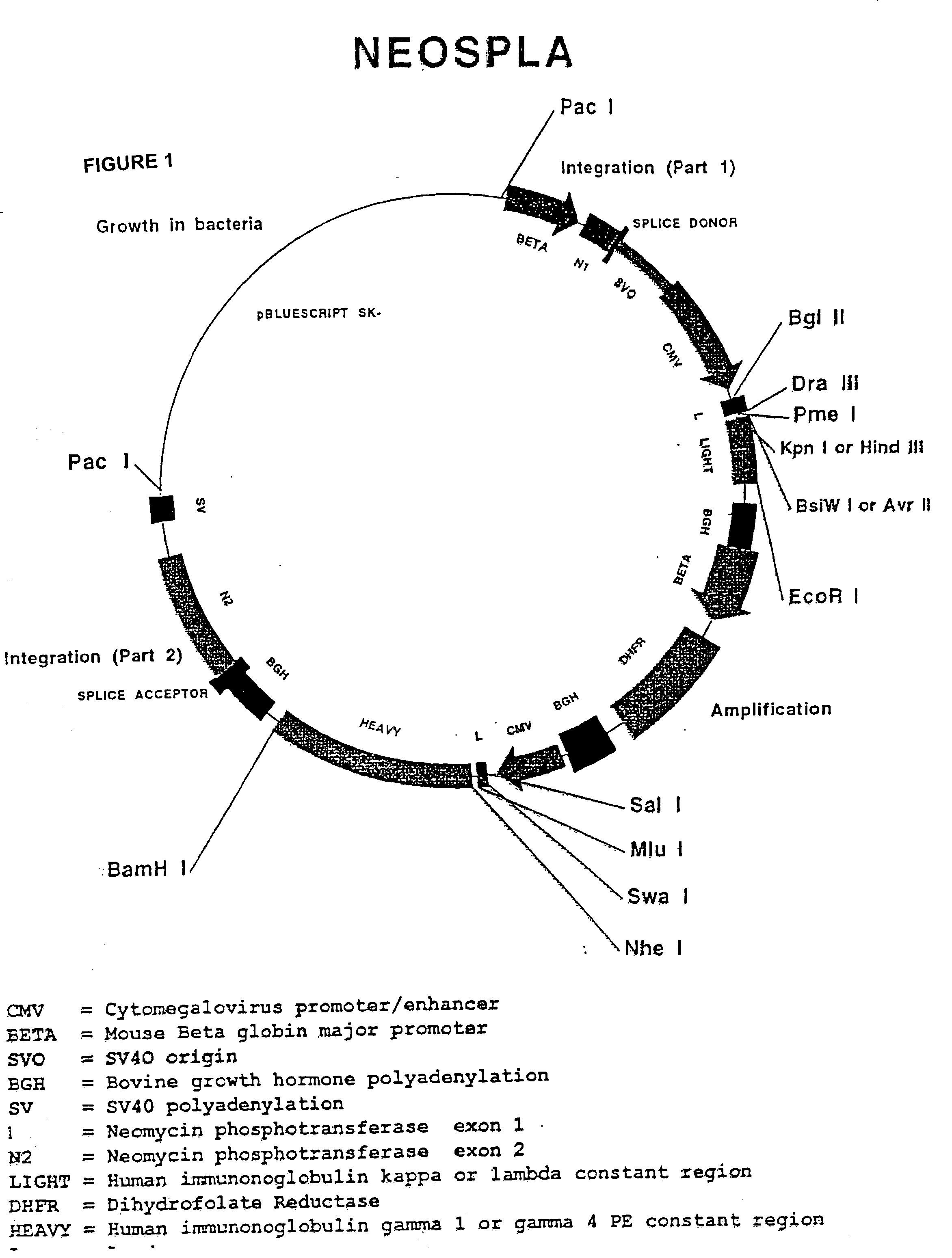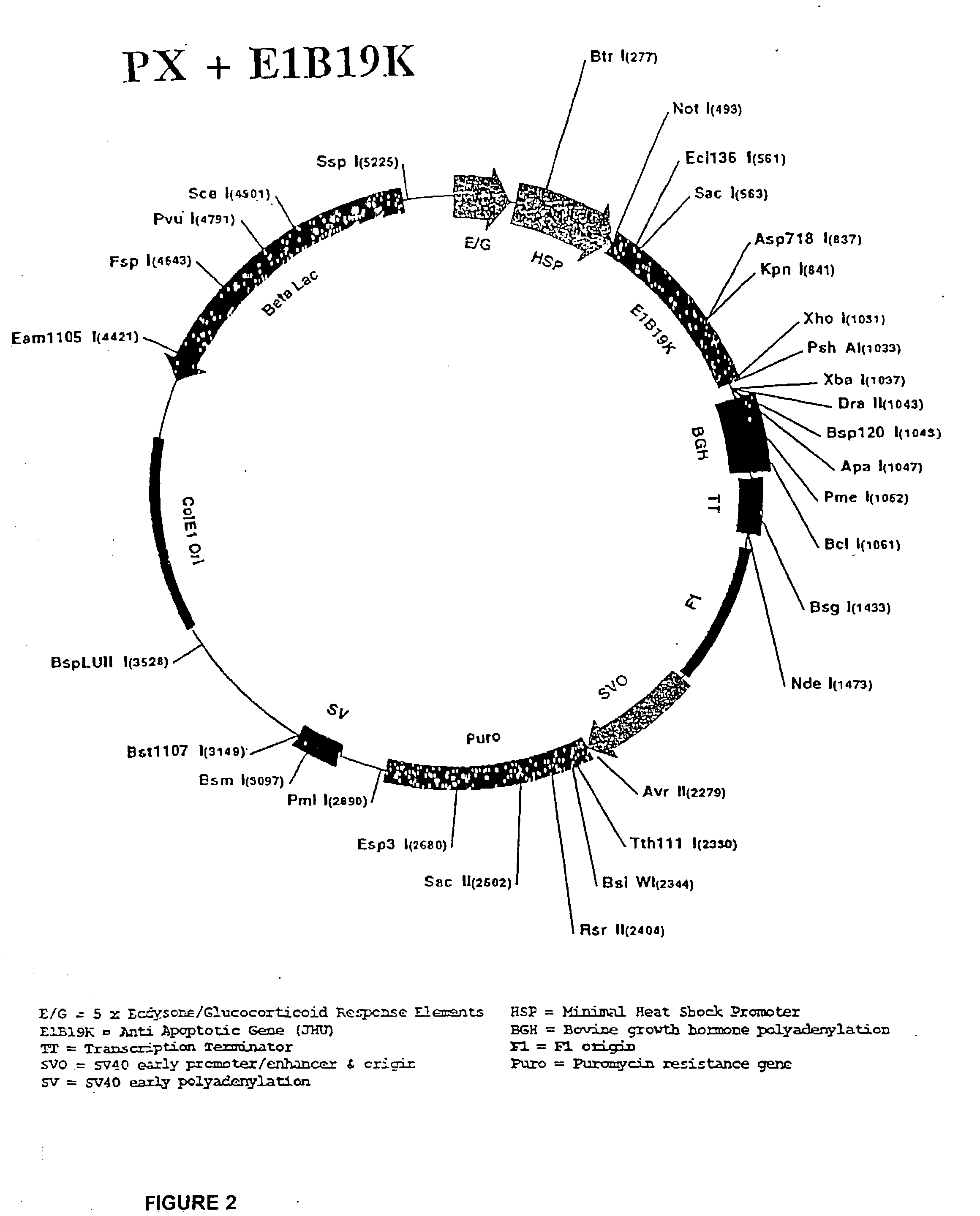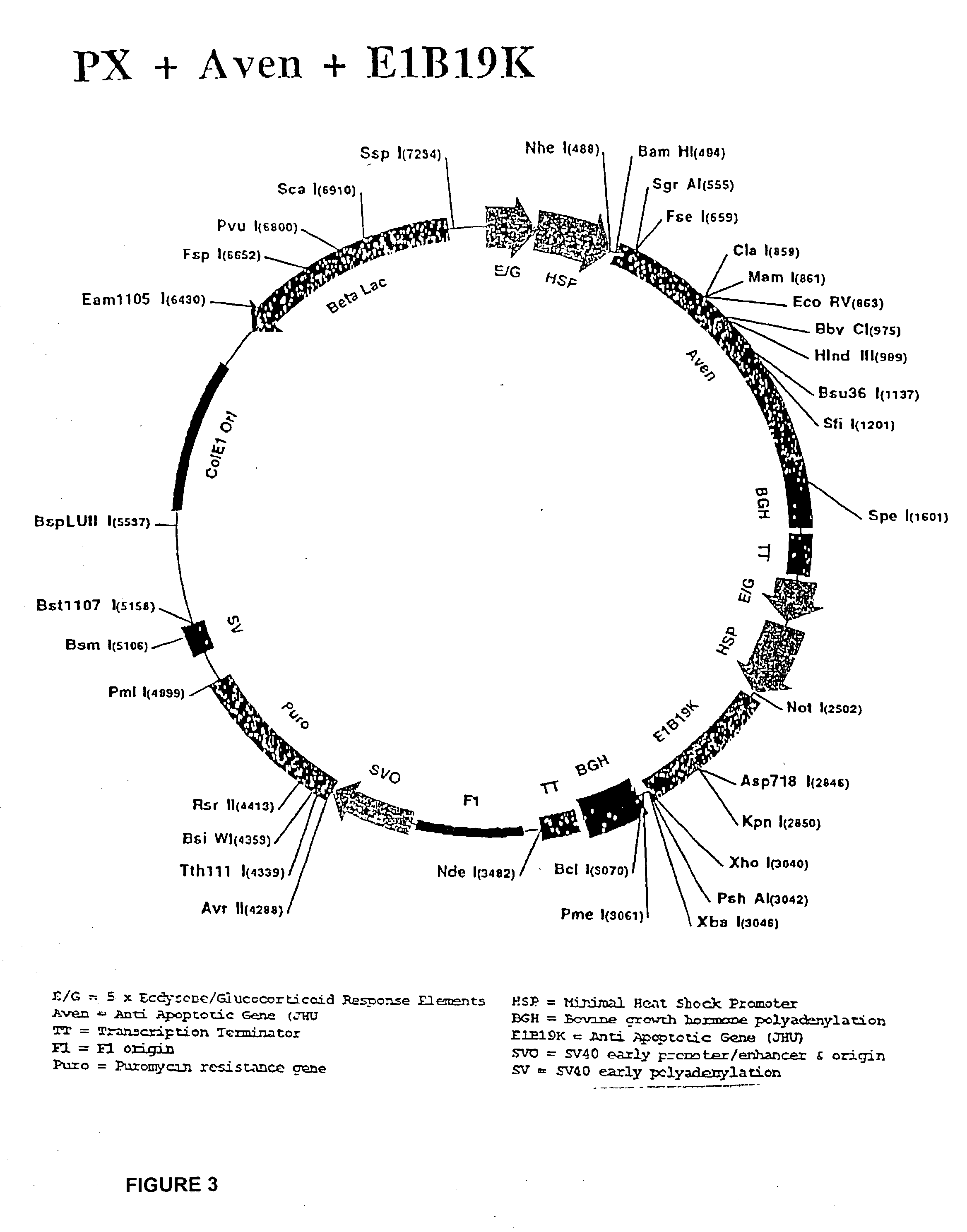Inhibition of apoptosis process and improvement of cell performance
a technology of apoptosis and cell performance, which is applied in the direction of immunoglobulins, peptides, drug compositions against animals/humans, etc., can solve the problems of cell death, high-value therapeutic or diagnostic proteins produced by eukaryotic cells in pharmaceutical or commercial manufacturing environment, etc., to increase the production of cell-related products, increase viability and cell performance, and increase the effect of cell-related products
- Summary
- Abstract
- Description
- Claims
- Application Information
AI Technical Summary
Benefits of technology
Problems solved by technology
Method used
Image
Examples
example 2
Derivation of Cell Populations
[0063] Mammalian cells used in the commercial manufacture of therapeutic proteins, such as Chinese Hamster Ovary (CHO) cells, are immortalized cell lines which can continue to undergo continuous rounds of division, generation after generation, indefinitely. This stands in marked contrast to primary cultures of normal diploid animal cells, which have a finite lifespan that manifests as senescence and cessation of division at approximately 50 generations.
[0064] In general, the standard level of homogeneity of a cell line is achieved by having a cell population derive from a single cell. It is not considered to be absolutely provable that a population has a single cell ancestral source, but rigorous methods have been established which are accepted as creating a very high probability that this is the case. This procedure, known as single cell cloning, is accomplished by diluting suspended cells in culture medium to a point where, statistically, there is les...
example 3
Cell Line History
[0066] The CHO 5C11 cell line, the immediate parent of the cell lines described in this invention, has two features significant features that support the expression of the anti-apoptotic genes and demonstration of the inventive method and preferred embodiments described herein. The parent cell line secretes a desired protein, antibody IDEC 131, and it expresses a cytosolic hybrid ecdysone steroid hormone receptor, which is a component of a system whereby expression of anti-apoptotic genes is induced.
[0067] The CHO 5C11 cell line originates from the Chinese Hamster Ovary cell line, CHO DG44, developed at Columbia University (Urlaub, PNAS 83 (17): 6519-23 (1986)). The CHO DG44 line is deficient in its expression of dihydrofolate reductase (DHFR), and is thus dependent on the expression of a transfected DHFR in order to acquire a resistance to methotrexate, a toxic agent used to select for genomic amplification. In the development to its present state, the CHO 5C11 lin...
example 4
Cell Culture Systems and Media
[0074] The CHO 5C11 line has been grown in a serum-free medium CHO SSFM II, a Gibco product (Grand Island, N.Y.). Cell cultures are grown continuously by sequentially passing a portion of a high cell density culture to a new culture with fresh medium. In experimental examples 7 and 8, as detailed below, a glucose-free variant of the serum-free CHO SSFM II medium Was used. Experimental studies, using batch or terminal cultures, have been conducted in small-scale systems, such as cell culture dishes, containing culture volumes of 1 to 2 ml, and spinner flasks, containing cultures of 50 to 200 ml in volume.
[0075] The practice of this invention can be applied to a wide variety of cell types, culture systems, and culture media. In general, commercial culture systems include bioreactor vessels with volumes that range between 1 and 50,000 liters. Cells, in general, are grown in free suspension, but examples of attachment-dependent and aggregated cells are also...
PUM
| Property | Measurement | Unit |
|---|---|---|
| volume | aaaaa | aaaaa |
| volume | aaaaa | aaaaa |
| volumes | aaaaa | aaaaa |
Abstract
Description
Claims
Application Information
 Login to View More
Login to View More - R&D
- Intellectual Property
- Life Sciences
- Materials
- Tech Scout
- Unparalleled Data Quality
- Higher Quality Content
- 60% Fewer Hallucinations
Browse by: Latest US Patents, China's latest patents, Technical Efficacy Thesaurus, Application Domain, Technology Topic, Popular Technical Reports.
© 2025 PatSnap. All rights reserved.Legal|Privacy policy|Modern Slavery Act Transparency Statement|Sitemap|About US| Contact US: help@patsnap.com



